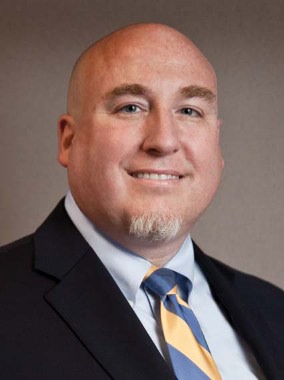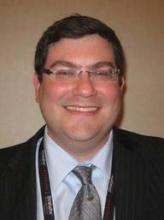LAS VEGAS – Ultrasound-guided radiofrequency ablation offers women a new, noninvasive treatment option for painful uterine fibroids.
"I actually think this changes the entire outlook," Dr. Scott Chudnoff said at the AAGL Global Congress. "The beauty of this is the simplicity. The risk is so low.
"I’ve been coming to AAGL for years and what I love about it is seeing the new technology on the horizon, and this is the first one in a few years that is a real game changer for the organization and for gynecology in general," he said in an interview.
He presented data from an international, phase III, single-arm study evaluating the safety and efficacy of the Acessa system to treat moderate to severe bleeding in 135 consecutive women, ages 30-54 years, with symptomatic fibroids.
The results prompted the Food and Drug Administration to clear Acessa for the treatment of uterine leiomyoma on Nov. 6, 2012, just as the AAGL Congress kicked off.
Acessa is already in use in Canada and Europe, and shrinks fibroids using radiofrequency energy delivered via an electrode array inserted into the fibroid under intra-abdominal laparoscopic ultrasound guidance.
One in five women may have fibroids during their childbearing years, and they are present in half of all women by aged 50 years. Many are asymptomatic, but fibroids are also one of the leading causes of hysterectomy.
The last time there was a change in fibroid treatment options was more than 5 years ago with the arrival of MRI-guided focused ultrasound ablation, but the data on this have been somewhat disappointing, said Dr. Chudnoff, director of obstetrics and gynecology and women’s health at Montefiore Medical Center in New York.
There are a range of medical therapies, but they primarily target the symptomatology and not the fibroid itself. Uterine artery embolization is a fantastic procedure, but it’s a global destruction process of the entire uterus, and there are concerns regarding future fertility, he observed. Hysteroscopic fibroid resection is useful for submucosal fibroids, but access is often difficult and women typically have other types of fibroids as well.
Finally, there’s myomectomy, "a bloody, invasive procedure that more often than not dooms the patient to having a Cesarean section and carries a recurrence rate of about 80%," Dr. Chudnoff said.
"So what do you tell your 35-year-old patient that comes into your office and says, ‘What can you do for me?’ " Dr. Chudnoff said. "That’s where I think this comes in. It is that opportunity to get in there early before patients become extremely symptomatic and treat these fibroids with fibroid-directed therapy.
"If in 5 or 10 years they get new fibroids, I can treat them again, but there’s a big difference between doing this and doing a myomectomy again or having to do a hysterectomy in a post-myomectomy patient. Those are disasters," he said.
Women in the trial had clinical menorrhagia (160-500 cc of menstrual blood loss per cycle), no more than six fibroids (mean, five), and a total uterine volume of 300 cc or less. Fibroid types were 193 subserosals, 347 intramurals, 39 transmurals, and 164 submucosals. The trial did not include pedunculated fibroids or type 0 fibroids because of concerns that ablation near the base of the stalk could result in secondary potential complications such as superinfections, he said.
In all, 674 fibroids were treated with Acessa, 96.2% on an outpatient basis. Patients returned to normal activity in an average of 7-10 days, and went back to work at a median of 9 days (range 0-29 days).
Patient-reported symptom severity scores on the validated Uterine Fibroid Symptom and Quality-of-Life (UFS-QOL) questionnaire decreased from a mean of 61.4 at baseline to 28.7 at 3 months, 28.6 at 6 months, and was significant at 26.4 at 12 months (P value less than .001), Dr. Chudnoff reported.
At the same time, mean quality of life scores on the UFS-QOL improved from 37.1 at baseline to 75.2, 78.1, and 80 (P less than .0001 at 12 months).
"What’s important to note is that patients continue to improve and [this] persists at high levels," he said.
Mean scores on the EuroQoL-5 dimensions (EQ-5D) measure also increased from 70.7 at baseline to 84.9 at 3 months, 84.6 at 6 months, and were significant at 85.7 at 12 months (P less than .0001).
There were five (3.7%) device-related adverse events: lower abdominal pain, pelvic abscess, two superficial uterine serosal burns, and post-treatment bleeding.
One patient underwent uterine artery embolization after withdrawing from the trial before her 6-month follow-up visit, resulting in a reintervention rate of 0.7%.



